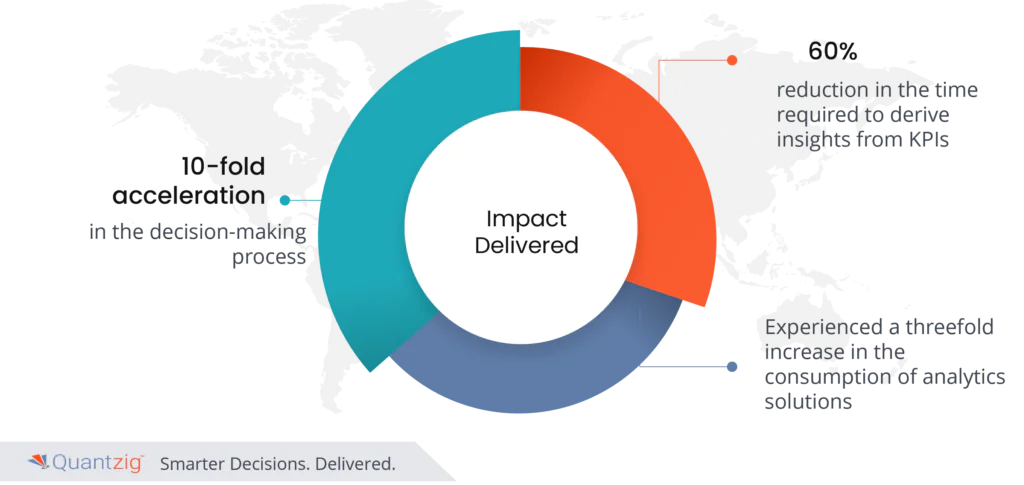Table of Contents
Introduction
In today’s data-driven business world, it’s no longer enough to rely on intuition and experience to stay ahead of the competition. A systematic and strategic approach is essential for understanding your organization’s performance, identifying opportunities for improvement, and making informed decisions. That’s where Key Performance Indicators come into play.
Key Performance Indicators serve as the compass that guides an organization’s strategic goals. They provide a tangible way to measure progress, identify areas for improvement, and optimize resource allocation. But the true value of KPIs lies not only in their selection, but also in how closely they align with your specific business objectives. In this article, we’ll dive into the essential realm of business KPI reporting. We’ll explore the art of choosing the right KPI, setting realistic benchmarks, implementing robust monitoring systems, and shed light on technology and tools for tracking KPIs, all while emphasizing the critical importance of data accuracy, consistent reporting, and timely data.
Importance of Gaining actionable Insights with Business KPI reporting
- Actionable KPIs serve as a guiding light, helping pinpoint areas for improvement, allocate resources judiciously, respond promptly to changing circumstances, and foster accountability within teams. Furthermore, they ensure that every member of the organization comprehends how their efforts contribute to overarching strategic goals, thus promoting goal alignment and a sense of purpose. Ultimately, the ability to gain actionable insights through KPI reporting is not just a desirable trait; it is the cornerstone of achieving sustainable growth and competitiveness in today’s data-driven business landscape.
- A well-structured set of Key Performance Indicators (KPIs) is crucial in the pursuit of actionable insights through KPI reporting. It is essential because it provides clarity, aligning KPIs with the organization’s strategic objectives, making their purpose evident. This alignment eliminates ambiguity, helping team members understand the data’s broader context.
- Responsibility within the structure ensures accountability, as assigned ownership motivates team members to act. Additionally, real-time monitoring, visualization, and contextual information are integral for swift decision-making and enhanced data understanding.
- An Organised KPI framework streamlines data interpretation, aligns efforts with strategic goals, and empowers teams to efficiently extract actionable insights, fostering continuous improvement and business success.
KPI Reporting: Guiding your Business or Leaving it Adrift?
Without proper business Key Performance Indicator (KPI) reporting, an organization may encounter several significant challenges and potential negative outcomes:
- Lack of Direction: Key Performance Indicators (KPIs) provide a roadmap for organizations, guiding them towards their strategic goals. Without Key Performance Indicator (KPI) reporting, businesses may operate without a clear direction, leading to confusion among employees and stakeholders.
- Inefficient Resource Allocation: Key Performance Indicators (KPIs) help identify areas that require improvement and optimization. Without Key Performance Indicator (KPI) reporting, businesses may allocate resources arbitrarily, leading to wastage and missed opportunities for growth.
- Missed Opportunities: Key Performance Indicators (KPIs) often reveal trends, opportunities, and threats in the market. Without proper reporting, businesses may overlook these critical insights, leading to missed opportunities or an inability to address emerging challenges.
- Poor Decision-Making: Making decisions based on data is essential for success. Without Key Performance Indicator (KPI) reporting, organizations may rely on intuition or incomplete information, increasing the risk of making poor decisions.
- Lack of Accountability: Key Performance Indicators (KPIs) assign responsibility for achieving specific targets. Without proper reporting, there may be a lack of accountability within the organization, which can result in a decline in employee motivation and commitment.
- Difficulty in Measuring Progress: Without Key Performance Indicators (KPIs) and proper reporting, it becomes challenging to measure progress towards strategic objectives. This lack of visibility makes it difficult to determine whether the organization is heading in the right direction or requires adjustments.
- Ineffective Performance Management: Key Performance Indicators (KPIs) play a crucial role in performance management and goal setting. Without proper reporting, businesses may struggle to establish clear expectations for employees, which can hinder performance improvement.
- Loss of Competitive Edge: In a competitive business environment, staying ahead requires continuous improvement. Without Key Performance Indicator (KPI) reporting, businesses may fall behind competitors who leverage data-driven insights to their advantage.
Success Story
“Unlocking Success: Leveraging Business KPI Reporting for Actionable Insights”
Client Details: A leading Confectionary Company located in Belgium.
Challenges:
- The marketing manager of a midsize confectionery company faced significant challenges due to the company’s rapid growth. The main challenge was the scattered and fragmented nature of their data, which was dispersed across various systems. This made it extremely difficult to consolidate the data and obtain a clear, real-time view of their key performance indicators (KPIs). The lack of data integration compounded this issue, necessitating manual data collection and reconciliation from various sources, which consumed valuable time and resources. This lack of visibility and resource-intensive data management has led to delayed decision-making, potentially resulting in missed opportunities. Moreover, maintaining data accuracy is a concern, which poses a risk of making misguided decisions. Overall, these challenges underscore the critical need for a streamlined data management and reporting system to effectively navigate the company’s growth and optimize performance in the competitive confectionery market.
Solutions:
- In response to the challenge of data fragmentation, we implemented a comprehensive strategy for data aggregation. We gathered crucial Key Performance Indicators (KPIs) from a diverse range of platforms, including our CRM system, website analytics, and various social media platforms. This inclusive approach allowed us to compile a comprehensive dataset, providing a panoramic view of our performance metrics. To enhance the usability of data, we utilized the capabilities of a powerful data visualization tool. Through this tool, we were able to create visually engaging charts and graphs. This not only helped us consolidate our scattered data sources but also transformed them into easily understandable formats. This strategic solution not only addressed the issue of data dispersion but also equipped our team with a clear and efficient way to comprehend the information. As a result, we now have the capability to make timely, data-driven decisions that improve our overall operational efficiency.
- To construct an effective KPI dashboard, the initial step involves clearly defining objectives. This includes understanding the objectives that need to be achieved through the dashboard. Subsequently, the appropriate Key Performance Indicators (KPIs), which are not only relevant but also measurable and achievable, are carefully selected based on these goals. Finally, gathering data from diverse sources is crucial to provide a comprehensive performance overview. This cohesive approach results in a powerful KPI dashboard that provides actionable insights, enabling informed decision-making and accurate goal tracking.
Impact Delivered:

- Achieved a 10-fold acceleration in the decision-making process.
- Realized a 60% reduction in the time required to derive insights from KPIs.
- Experienced a threefold increase in the consumption of analytics solutions.
“Transform Your Business Today: Harness the Power of KPI Reporting for Informed Decision-Making! Drive Success, Optimize Performance, and Achieve Your Goals. Take the leap towards actionable insights – Act Now!”


